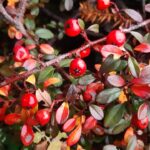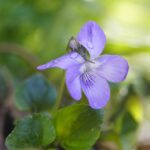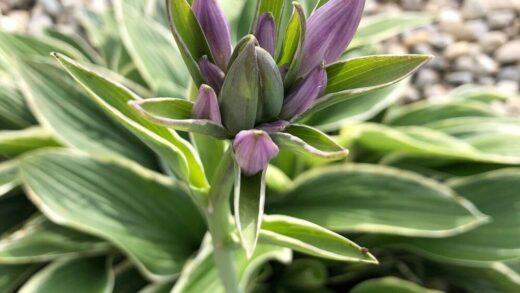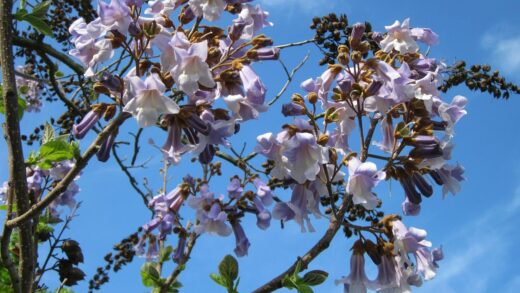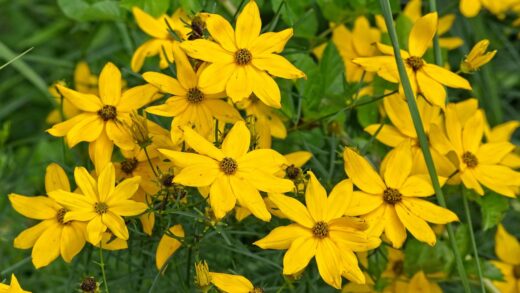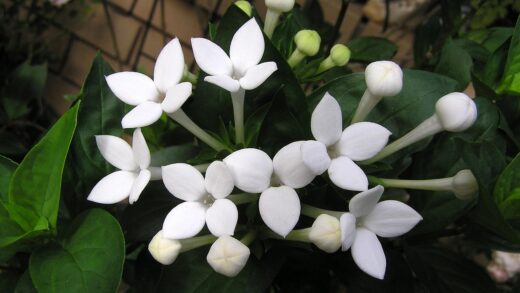Water is the lifeblood of any plant, and for the Japanese maple, with its fine-textured foliage and sensitive root system, achieving the right moisture balance is a cornerstone of its care. These elegant trees are not drought-tolerant and react poorly to both waterlogged conditions and prolonged dryness, making thoughtful irrigation a critical practice. Understanding the tree’s specific water needs, which fluctuate with age, season, climate, and soil type, is essential for maintaining its health and vibrant appearance. An effective watering strategy goes beyond a simple schedule; it involves observing the tree, feeling the soil, and responding to the subtle cues that indicate its thirst. Mastering the art of irrigation is fundamental to preventing stress, promoting robust growth, and ensuring the longevity of this prized garden specimen.
Understanding the tree’s basic water needs
At its core, the Japanese maple requires soil that is consistently moist but well-drained. This mimics the conditions of its native woodland habitat in Japan, Korea, and China, where it grows in the understory on sloped terrain with ample rainfall and soil rich in organic matter. The organic matter acts like a sponge, holding moisture, while the slope and soil structure ensure that excess water drains away freely. The goal in a garden setting is to replicate this balance. The tree’s shallow, fibrous root system is particularly susceptible to drying out, which is why consistent moisture in the top layer of soil is so important for its well-being.
The water needs of a Japanese maple change significantly throughout its life. A newly planted tree has a very limited root system and is almost entirely dependent on the gardener for its water supply during its first two to three growing seasons. During this critical establishment period, the tree is highly vulnerable to drought stress, which can stunt its growth or even be fatal. In contrast, a mature, well-established tree with a broad root system is much more resilient and can draw water from a larger volume of soil, making it more capable of withstanding short dry spells. However, even mature trees will require supplemental irrigation during periods of extended heat and drought.
Seasonal changes also dictate the tree’s demand for water. The highest demand occurs in late spring and summer when the tree is in full leaf and actively photosynthesizing, and when temperatures are highest. During this period, water is rapidly lost through the leaves via transpiration, and the soil dries out more quickly. As autumn approaches and temperatures cool, the tree’s water requirements begin to decrease. Once the tree drops its leaves and enters dormancy for the winter, its need for water is minimal, though the soil should never be allowed to become bone dry.
It is also important to recognize that different cultivars may have slightly different water needs. Varieties with finely dissected, lace-like leaves, such as the ‘Crimson Queen’ or ‘Viridis’ types, tend to be more susceptible to dehydration and leaf scorch than those with broader, palmate leaves. These delicate varieties often benefit from more vigilant monitoring of soil moisture and may require more frequent watering, especially if they are planted in a location that receives more direct sunlight. Being aware of the specific characteristics of your cultivar can help you fine-tune your watering practices.
More articles on this topic
Signs of improper watering
One of the most common challenges in caring for Japanese maples is correctly interpreting the signals the tree sends when it is receiving either too much or too little water. Underwatering, or drought stress, typically manifests first at the tips and margins of the leaves. You may notice the edges of the leaves turning brown, crispy, and dry. In more severe cases, the entire leaf may wilt, curl, and eventually drop from the tree. A severely underwatered tree will also exhibit drooping branches and an overall lack of vigor, and its new growth may be stunted.
Paradoxically, the symptoms of overwatering can be strikingly similar to those of underwatering, which often leads to confusion. When a tree’s roots are saturated with water, they are deprived of oxygen and begin to rot. These damaged roots are unable to absorb water and nutrients, leading to symptoms in the canopy that mimic drought stress, such as wilting and yellowing leaves. A key difference to look for is the condition of the soil; if the leaves are wilting but the soil is consistently wet or soggy, overwatering is almost certainly the culprit. Overwatering may also cause premature leaf drop and, in advanced cases, lead to dieback of entire branches.
Leaf scorch is another common symptom related to moisture stress, although it is often a combination of factors. It appears as browning or “burning” along the edges of the leaves and in the areas between the veins. While intense sunlight is the direct cause of the burn, the underlying issue is often that the tree cannot draw up enough water to the leaves quickly enough to keep them cool and hydrated under the sun’s heat. This can be due to either insufficient soil moisture (underwatering), damaged roots from overwatering, or even exposure to hot, drying winds that increase the rate of transpiration beyond what the roots can supply.
To accurately diagnose a watering problem, you must move beyond observing the leaves and assess the conditions at the root level. The most reliable method is to physically check the soil. Scrape back any mulch and dig down 5-10 centimeters with your fingers. If the soil is dry and crumbly, the tree needs water. If it is wet, muddy, or has a sour smell, it is likely being overwatered, and you should allow it to dry out before watering again. This simple, hands-on check is the most effective way to distinguish between the two problems and take the correct action.
More articles on this topic
Effective irrigation techniques
The best way to water a Japanese maple, whether newly planted or established, is with a slow, deep soak. This method ensures that the water penetrates deep into the soil profile, encouraging the roots to grow downwards in search of moisture. A deep root system is more resilient to drought than a shallow one. Using a soaker hose or a drip irrigation system that snakes around the tree’s dripline is an excellent way to deliver water slowly and directly to the root zone, minimizing runoff and evaporation. If you are using a regular hose, turn it on to a slow trickle and leave it in place for 30-60 minutes, moving it to a few different spots around the base of the tree to ensure even coverage.
The timing of your watering can also make a significant difference. Watering in the early morning is the most efficient and beneficial time of day. In the morning, temperatures are cooler, and winds are generally calmer, which means less water is lost to evaporation compared to watering in the midday heat. Watering in the morning also ensures that the tree is well-hydrated before the heat of the day sets in. Avoid watering in the late evening, as foliage that remains wet overnight can be more susceptible to the development of fungal diseases like powdery mildew.
For container-grown Japanese maples, the watering technique needs to be slightly different. Because the soil volume is limited, they dry out very quickly and require frequent, thorough watering. When you water a potted maple, continue to add water until it flows freely from the drainage holes at the bottom of the pot. This ensures that the entire root ball is saturated and also helps to flush out any accumulated salts from fertilizers that can build up in the soil over time. Never let a potted maple sit in a saucer full of water, as this will lead to waterlogged soil and root rot.
Mulching is a simple yet profoundly effective technique for managing soil moisture. Applying a 5-8 centimeter layer of organic mulch over the root zone of your Japanese maple provides a multitude of benefits related to irrigation. The mulch acts as a barrier, reducing the rate of water evaporation from the soil surface, which means the soil stays moist for longer after watering. It also helps to suppress weeds that would compete with the tree for water and moderates soil temperature, protecting the shallow roots from extreme heat. As the organic mulch breaks down, it also improves the soil’s structure and water-holding capacity.
Adapting to climate and soil conditions
The specific climate in which you live is a primary determinant of how often you will need to water your Japanese maple. A tree growing in a hot, arid region will naturally require significantly more supplemental irrigation than one in a cool, temperate climate with regular rainfall. Gardeners in dry climates must be especially vigilant during the summer months and may need to water their trees deeply every few days. Conversely, in regions with plentiful summer rain, you may only need to provide water during occasional dry spells. Paying attention to your local weather patterns and rainfall totals is key to developing a responsive watering routine.
Soil type plays an equally crucial role in your irrigation strategy. Sandy soils have large particles and drain very quickly, meaning they do not retain moisture well. If you have sandy soil, you will need to water more frequently, but perhaps with less volume each time, to keep the root zone hydrated. On the other hand, heavy clay soils consist of very fine particles and tend to hold onto water for a long time, increasing the risk of overwatering. In clay soils, it is essential to water less frequently and to ensure that the soil has had a chance to dry out somewhat between waterings. Amending your soil with compost at the time of planting is the best way to improve its water-holding capacity and drainage, regardless of its original type.
The microclimate of your specific garden site also influences water needs. A Japanese maple planted in a location that receives more sun and wind will lose moisture more rapidly than one planted in a sheltered, shady spot. A tree planted on a slope will tend to dry out faster than one on level ground due to water runoff. Similarly, a tree planted near a heat-reflecting surface like a brick wall or a paved driveway will experience higher temperatures and greater water demand. Understanding these small-scale environmental factors will allow you to fine-tune your watering for each individual tree.
Finally, the use of water-wise gardening principles can help you create a more resilient landscape. Grouping plants with similar water needs together, known as hydrozoning, can make your irrigation efforts more efficient. Using organic mulches and improving your soil with compost will significantly enhance its ability to capture and retain moisture from rainfall and irrigation. By creating a healthy soil ecosystem and choosing the right plant for the right place, you can reduce the overall water demands of your garden and create a more sustainable environment for your Japanese maple to thrive.
Special considerations for potted maples
Watering a Japanese maple grown in a container is a fundamentally different task than caring for one in the ground. The limited volume of soil in a pot can dry out with surprising speed, especially on hot, sunny, or windy days. This makes frequent and consistent watering an absolute necessity. During the peak of the summer growing season, it is not uncommon for a potted maple to require watering every single day. The smaller the pot, the more frequently it will need to be checked and watered. Letting a container-grown maple dry out completely, even once, can cause significant damage to the fine feeder roots and lead to widespread leaf scorch.
The type of container you choose can also affect your watering routine. Porous materials like unglazed terracotta or clay dry out much faster than non-porous materials like plastic or glazed ceramic because moisture can evaporate through the sides of the pot. While terracotta can be beneficial in preventing waterlogged soil, it requires more vigilant watering. Regardless of the material, it is absolutely essential that the container has adequate drainage holes at the bottom. Without proper drainage, water will accumulate, saturate the soil, and quickly lead to fatal root rot.
The potting medium used for container-grown maples should be designed to balance moisture retention with excellent drainage. A high-quality potting mix, often one containing components like peat moss, composted bark fines, and perlite or pumice, is ideal. These mixes retain enough moisture to keep the roots happy but the inorganic components create air pockets and allow excess water to drain away freely. Avoid using standard garden soil in pots, as it is too dense, compacts easily, and does not provide the drainage that containerized plants require.
Because frequent watering is necessary for potted maples, there is a risk of flushing nutrients out of the soil over time. This means that container-grown specimens may require more regular fertilization than their in-ground counterparts, though still with a conservative approach. A slow-release granular fertilizer applied in the spring or a diluted liquid fertilizer applied every few weeks during the growing season can help to replenish these lost nutrients. Always water the plant thoroughly before applying any liquid fertilizer to avoid burning the roots.









